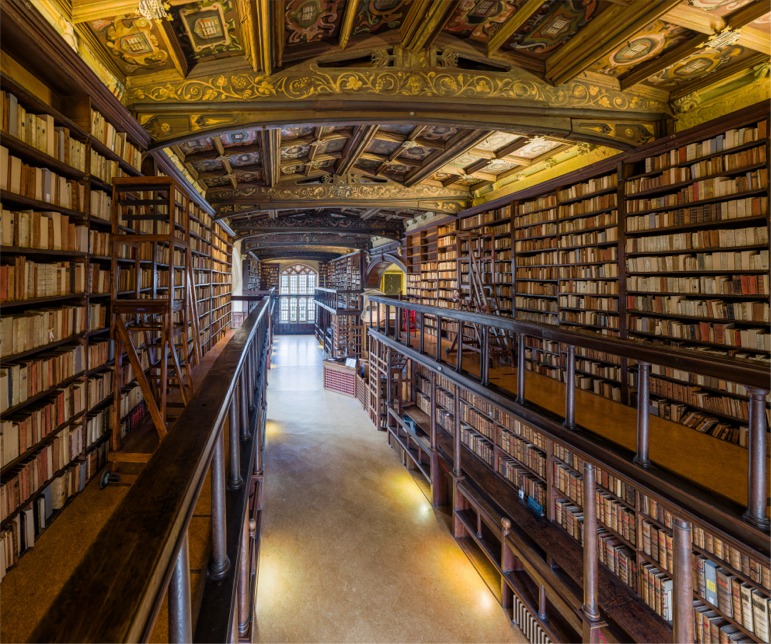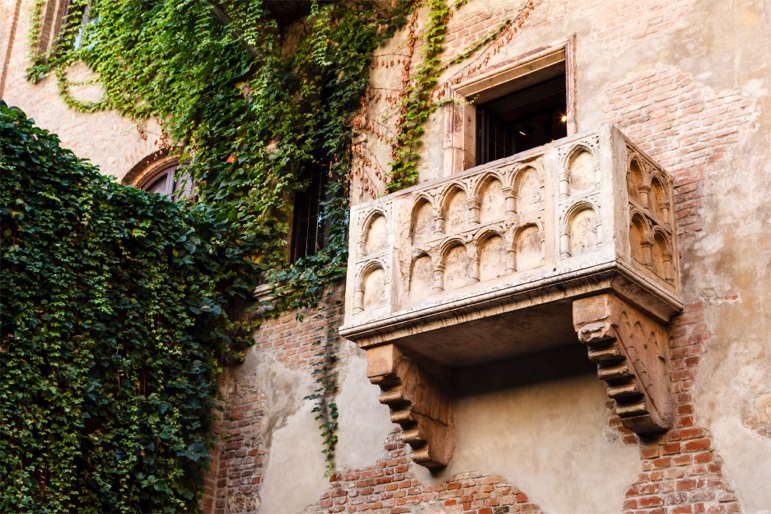To download a copy of this academic paper in pdf format, please click here: PAPER – Leather Cover of the Bodleian First Folio
In August of 2012 a group of conservators named Sabina Pugh, Julie Sommerfeldt, Arthur Green, Vanessa Redgrave, Thelma Holt, Andrew Honey, and Nicole Gilroy examined and repaired the tattered First Folio in preparation for digitizing.[1] The Senior Conservator of the Bodleian Library, Andrew Honey, closely examined the First Folio and compared it to other books bound by William Wildgoose held in the Bodleian Library, some of which were part of the same consignment as the First Folio, and others bound in the same period. Honey’s exemplary research revealed:
Within this group of bindings there is little variation in binding technique, but some unexplained variation in the material used…Six of the seven remaining bindings have been covered with tanned reversed or rough calf, and although there is some variation in the texture, the colour is remarkably uniform, being a warm orange/red brown…The First Folio was covered with tanned calf with the grain side outermost and although the leather is now worn, it has a uniform grain layer and is darker brown than the than the reversed calf. Two types of covering leather were used, but it is not clear why the First Folio was bound with a different and more expensive material.[2]
Thus the First Folio was covered in a different more expensive high quality dark brown leather similar to the colour of chocolate. This was of particular interest to me, as I had already examined a dark brown chocolate leather bound book titled ‘Sefer ha-Refu’ot’ or ‘Book of Remedies’ of 1554 in Latin with Hebrew scripture references, Aramaic references from the Babylonian Talmud and the Mantua Zohar of 1558 also printed by the Bassano family, even though the Zohar had not been printed by this time.
There is an inscription in a faint handwriting of a quill pen of ‘A.Bassan’ that appears to have been added at a later date, thus the book was originally penned without credit to the original author. The ‘A.Bassan’ could have been either Alvise Bassano before he passed away in 1554, or his younger brother Antonio Bassano, the Merchant of Venice. The fact that the book was passed down to descendants of Antonio Bassano tends to suggest it was penned by Antonio Bassano in 1554, and kept in loose leaf until it was bound in 1624.
The book contains numerous healing remedies with substances of the earth such as honey, wine, balsam, mandrake, numerous herbs, roots, minerals, and even stones, all of which were all used throughout the Shakespearean works. The Sefer ha-Refu’ot also contains imageries of the Tree of Life and many angels of the presence mentioned in the Book of Jubilees. These ancient remedies can be traced back to the Essenes of Bashan (Bassan), Qumran, and Jerusalem during the Hasmonean Dynasty, with some even dating back to King Hezekiah.
The interesting connection to the First Folio is the binding technique and the initials of a ‘W.W.’ with the date of ‘4 Apr. 1624’ penned on the inside cover page. This suggests the book was bound by a ‘W.W.’ on 4th April 1624. The tattered pages are creased as though they were previously held together with a single string in the middle just as the First Folio was prior to binding.
I compared the leather on the Sefer ha-Refu’ot and discovered it is strikingly similar to that of the First Folio. It was bound with a dark brown chocolate fine calfskin leather with uniform grain laid grain side out, just as was done with the First Folio. The diagonal hatching blind-tooled on the edge of the spine of the Sefer ha-Refu’ot tend to suggest the ‘W.W.’ may be William Wildgoose because both books contain blind-tooled inboard bindings of brown calfskin over pulp boards with the same endleaf craftsmanship.[3] The condition of the leather on the Sefer ha-Refu’ot is considerably better than the First Folio. They both have similar damage to the leather cover that is consistent with the age. However, both front and rear hinges to the Sefer ha-Refu’ot are damaged. The fact that the First Folio was bound with a different and more expensive darker brown calfskin leather than other books bound by Wildgoose tends to suggest a deal was done with the Bassano family for binding their family book of remedies in exchange for the supply of fine dark brown chocolate calfskin.[4]
Jeronimo Bassano II (1559-1635) and his brother Edward Bassano (1551-1615) were producers and exporters of fine dark brown chocolate leather. The family connections extend to Edward Bassano’s daughter Dorcas Bassano, who married a skinner by the name of Toby Almye on 16 May 1618,[5] and they likely continued in her father’s portion of the business.
The will of Jeronimo Bassano Esq was proven on 28 August 1635 by his son Nowell Bassano,[6] who incidentally was one of the founding trustees of the first Jewish Synagogue in Creechurch Lane on 28 January 1686,[7] details numerous freehold and leasehold properties including lands, meadows, pastures, orchards, barns, stables, stock and gardens. He referred to properties and manors in Waltham Holy Cross in Essex, Hoyden, Culvers Grove, Starneshope, Rowcroft, Pottershill (a large messuage in Waltham Holy Cross on two deeds with a Manor at Epping and woodlands called Wintry Woods and Orange Grove),[8] a principal home named Pegrimes at Southend (near the port), and a substantial farm at Woodridden leased from Edward Denny, the Earl of Norwich.[9]
Jeronimo and his brothers Arthur and Andrea Bassano, who were noted as Queen Elizabeth’s musicians, were given a patent from 27 August 1593 to export 60,000 calf-skins over a seven year period, whereby they only paid 5s per dicker (ten calf-skins) for transport (export duty).[10] It was renewed on 4 September 1598 to Arthur, Andrea and Jeronimo, but in 1604 a further licence was granted to include Edward and Scipio Bassano with the original three to transport 6,000 dickers (60,000 skins as there are ten skins per dicker) from the date of renewal.[11]
The Bassano family not only bred cattle, but extended members of the family slaughtered, skinned, and tanned the leather for export. I should note that a descendant from this same lineage of Antonio Bassano owns the book ‘Sefer ha-Refu’ot’ today, although I am prevented from revealing the current owners details. They prefer to remain anonymous for the protection of their family heirloom. I can however reveal that the owners have requested I translate this book, which will most likely be released in 2016-2017 as ‘Bassano’s Ancient Book of Remedies’.
Elena Bassano also owned a dark brown chocolate leather covered timber jewellery box. It is a similar leather to the ‘Sefer ha-Refu’ot’ although likely crafted much earlier. It is believed that Antonio handcrafted this jewellery box as a gift for his wife,[12] probably from offcuts of dark chocolate leather from leather covered cornets and other musical instruments manufactured by the Bassano family.
Consequently, there is overwhelming evidence to suggest that the Bassano family supplied the leather for the First Folio, probably in return for binding their family Book of Remedies. However, this is only the first extraordinary connection with the First Folio that expands as we investigate the later owners of the First Folio from Derbyshire.
© 2014 Dr Peter D Matthews PhD
For the full story, look out for ‘Genesis of the Shakespearean Works’ on bookshelves shortly.
[1] Gilroy, Nicole (2012) Spirit for Shakespeare: Conservation Diary, Day 1-10, http://shakespeare.bodleian.ox.ac.uk/tag/conservation/
[2] Honey, Andrew and Green, Arthur (2012-2014 unpublished paper) ‘Met by chance’ – a Group of Ten Books Bound for the Bodleian Library in February 1624 by William Wildgoose of Oxford, kindly supplied by Andrew Honey in personal correspondence prior to publication of his paper, pp.16-17.
[3] Ibid, p13.
[4] Ibid, pp.16-17.
[5] England Marriage Record for Dorcas Bassano and Toby Almye 16 May 1618 at Saint Helen, Bishopsgate.
[6] The National Archives; Kew, England; Prerogative Court of Canterbury and Related Probate Jurisdictions: Will Registers; Class: PROB 11; Piece: 168
[7] Matthews, Dr Peter D (2013), Shakespeare Exhumed: The Bassano Chronicles, Bassano Publishing House, Stanthorpe, Queensland, Australia, ISBN 9780987365255, p121.
[8] Essex Estate Record D/DW/T26, http://seax.essexcc.gov.uk/Result_Details.aspx?DocID=202097
[9] The National Archives; Kew, England; Prerogative Court of Canterbury and Related Probate Jurisdictions: Will Registers; Class: PROB 11; Piece: 168
[10] Queen Elizabeth – Volume 268: September 1598, Calendar of State Papers Domestic: Elizabeth, 1596-1601 (1869), pp. 90-102.
[11] James I: Volume 10: November-December, 1604, Calendar of State Papers Domestic: James I, 1603-1610 (1857), pp. 164-182.
[12] Matthews, Dr Peter D (2013), Shakespeare Exhumed: The Bassano Chronicles, Bassano Publishing House, Stanthorpe, Queensland, Australia, ISBN 9780987365255, p.66-67.
Photo by David Iliff. Used under licence CC-BY-SA 3.0.



